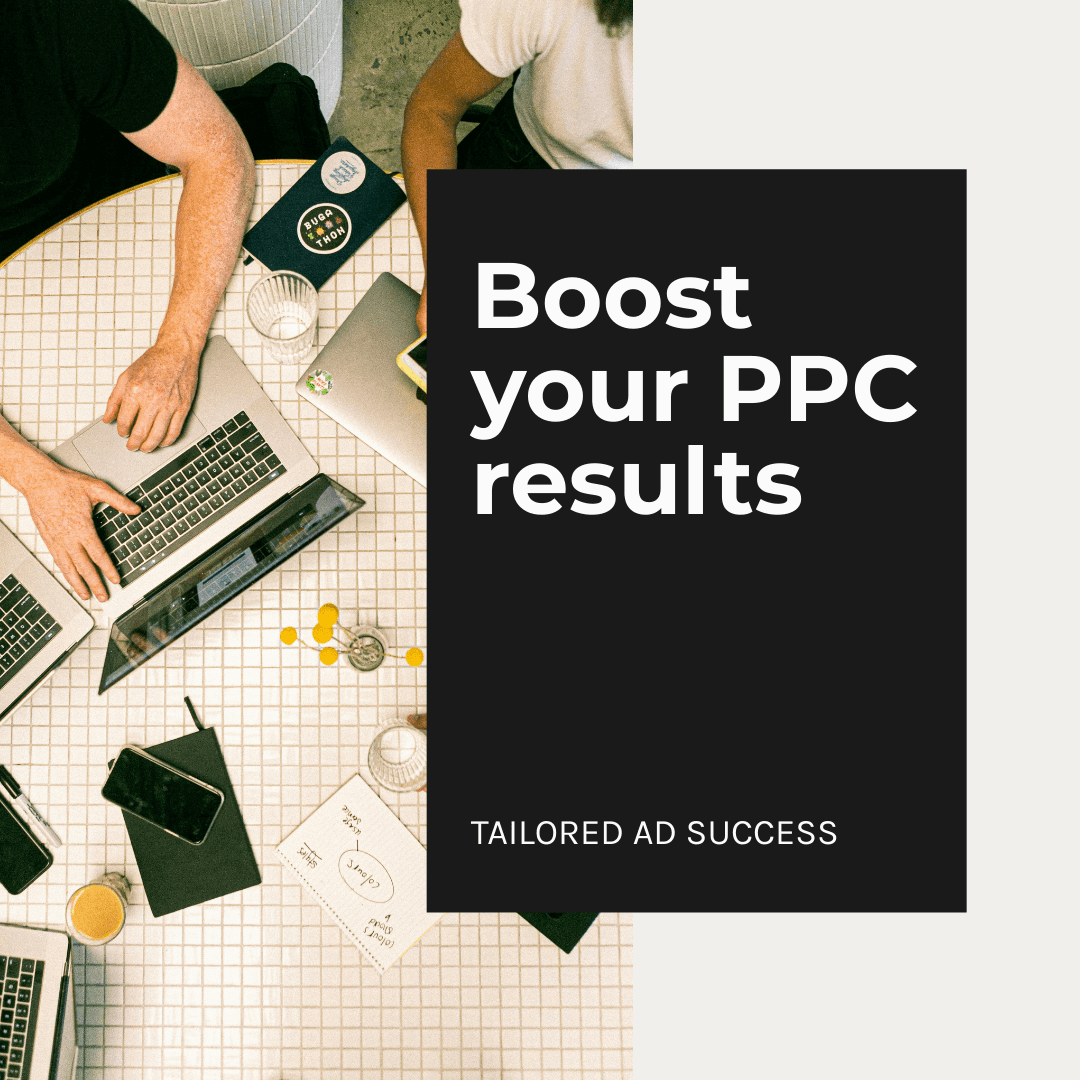25 Expert Tips to Maximize Your PPC Advertising ROI in 2024
Tips
Jul 13, 2024
10 Min Read
Learn how to optimize your pay-per-click campaigns for better performance, higher conversions, and improved return on investment in today's competitive digital landscape.



More Articles
Latest Blogs
Latest Blogs
Pay-Per-Click (PPC) advertising remains a powerful tool for driving targeted traffic and generating leads. As the digital advertising landscape evolves, staying ahead of the curve is crucial for maximizing your return on investment (ROI). Here are 25 expert tips to supercharge your PPC campaigns in 2024.
1. Embrace AI and Machine Learning
Leverage advanced AI tools for:
Automated bidding strategies
Predictive analytics for performance forecasting
Dynamic ad creation and optimization
Audience targeting refinement
2. Optimize for Voice Search
Adapt to the rise of voice-activated devices:
Target conversational long-tail keywords
Create ads that answer specific questions
Use natural language in ad copy
Optimize for local voice searches
3. Implement Smart Bidding Strategies
Utilize Google Ads smart bidding options:
Target CPA (Cost Per Acquisition)
Target ROAS (Return on Ad Spend)
Maximize Conversions
Enhanced CPC (Cost Per Click)
4. Focus on Audience Targeting
Go beyond keywords with advanced audience targeting:
Use in-market audiences
Implement remarketing lists
Create custom intent audiences
Leverage similar audiences
5. Prioritize Mobile Optimization
Ensure your PPC strategy is mobile-first:
Create mobile-specific ad copies
Use mobile-friendly landing pages
Implement call extensions for click-to-call
Adjust bids for mobile devices
6. Leverage Video Ads
Capitalize on the growing popularity of video content:
Create engaging video ads for YouTube
Use TrueView ads for better targeting
Implement video remarketing campaigns
Test different video lengths and formats
7. Utilize Ad Extensions
Enhance your ads with extensions:
Implement sitelink extensions
Use callout extensions to highlight USPs
Add structured snippet extensions
Leverage price extensions for e-commerce
8. Implement Responsive Search Ads
Take advantage of Google's responsive ad formats:
Create multiple headlines and descriptions
Allow Google to test different combinations
Monitor performance and refine over time
Use ad strength indicators for optimization
9. Focus on Quality Score
Improve your Quality Score for better ad placement and lower costs:
Enhance ad relevance to keywords
Improve landing page experience
Increase expected click-through rate (CTR)
10. Optimize Landing Pages
Ensure your landing pages convert:
Create dedicated landing pages for each campaign
Implement clear and compelling calls-to-action (CTAs)
Ensure fast loading times
Use A/B testing to optimize performance
11. Implement Negative Keywords
Refine your targeting and reduce wasted spend:
Regularly review search terms report
Add irrelevant terms as negative keywords
Use negative keyword lists across campaigns
Implement campaign-level and ad group-level negatives
12. Utilize Remarketing
Re-engage potential customers:
Create dynamic remarketing ads
Segment audiences based on site behavior
Use RLSA (Remarketing Lists for Search Ads)
Implement cross-platform remarketing
13. Optimize for Conversion Rate
Focus on turning clicks into conversions:
Use clear and compelling ad copy
Ensure ad-to-landing page message match
Implement trust signals (testimonials, certifications)
Use urgency and scarcity tactics ethically
14. Leverage Automation
Save time and improve efficiency with automation:
Use automated rules for bid adjustments
Implement scripts for advanced management
Utilize automated reporting features
Explore third-party automation tools
15. Implement Dayparting
Optimize your ad schedule:
Analyze performance data by time of day and day of week
Adjust bids during high-performing periods
Pause ads during low-converting times
Consider time zone differences for global campaigns
16. Focus on Geographic Targeting
Refine your targeting based on location:
Use location bid adjustments
Implement local inventory ads for retailers
Create location-specific ad copy
Exclude underperforming locations
17. Utilize Audience Observations
Gain insights without limiting reach:
Add audience lists in observation mode
Analyze performance data by audience
Use bid adjustments based on audience performance
Discover new targeting opportunities
18. Implement Cross-Channel Attribution
Understand the full customer journey:
Use data-driven attribution models
Implement cross-device tracking
Consider view-through conversions
Analyze assisted conversions
19. Optimize for Voice Assistants
Prepare for the rise of voice-activated shopping:
Target "near me" searches
Optimize for question-based queries
Use structured data for better visibility
Create content that answers voice queries
20. Leverage Social PPC
Expand beyond search engines:
Implement Facebook and Instagram ads
Utilize LinkedIn ads for B2B
Explore Twitter ad opportunities
Test Pinterest ads for visual products
21. Use Ad Customizers
Create more relevant, dynamic ads:
Implement countdown customizers for time-sensitive offers
Use location insertions for local relevance
Leverage price customizers for e-commerce
Test IF functions for tailored messaging
22. Focus on Ad Relevance
Improve your ad-to-query match:
Use SKAGs (Single Keyword Ad Groups) for tight control
Implement dynamic keyword insertion
Create highly specific ad groups
Regularly review and refine ad copy
23. Utilize Competitive Analysis
Stay ahead of your competitors:
Use auction insights report
Monitor competitor ad copy and offers
Implement competitive bid strategies
Identify and capitalize on competitor gaps
24. Implement Offline Conversion Tracking
Connect online ads to offline sales:
Set up offline conversion imports
Use call tracking for phone leads
Implement store visit tracking
Utilize CRM integration for lead tracking
25. Continuously Test and Optimize
Never stop improving your campaigns:
Regularly test ad copy variations
Experiment with different landing pages
Try new targeting options and ad formats
Continuously refine your bidding strategies
By implementing these expert PPC tips, you'll be well-positioned to maximize your advertising ROI in 2024. Remember, successful PPC management requires ongoing attention, analysis, and optimization. Stay agile, keep testing, and always be ready to adapt to new trends and technologies in the ever-evolving world of digital advertising.
Pay-Per-Click (PPC) advertising remains a powerful tool for driving targeted traffic and generating leads. As the digital advertising landscape evolves, staying ahead of the curve is crucial for maximizing your return on investment (ROI). Here are 25 expert tips to supercharge your PPC campaigns in 2024.
1. Embrace AI and Machine Learning
Leverage advanced AI tools for:
Automated bidding strategies
Predictive analytics for performance forecasting
Dynamic ad creation and optimization
Audience targeting refinement
2. Optimize for Voice Search
Adapt to the rise of voice-activated devices:
Target conversational long-tail keywords
Create ads that answer specific questions
Use natural language in ad copy
Optimize for local voice searches
3. Implement Smart Bidding Strategies
Utilize Google Ads smart bidding options:
Target CPA (Cost Per Acquisition)
Target ROAS (Return on Ad Spend)
Maximize Conversions
Enhanced CPC (Cost Per Click)
4. Focus on Audience Targeting
Go beyond keywords with advanced audience targeting:
Use in-market audiences
Implement remarketing lists
Create custom intent audiences
Leverage similar audiences
5. Prioritize Mobile Optimization
Ensure your PPC strategy is mobile-first:
Create mobile-specific ad copies
Use mobile-friendly landing pages
Implement call extensions for click-to-call
Adjust bids for mobile devices
6. Leverage Video Ads
Capitalize on the growing popularity of video content:
Create engaging video ads for YouTube
Use TrueView ads for better targeting
Implement video remarketing campaigns
Test different video lengths and formats
7. Utilize Ad Extensions
Enhance your ads with extensions:
Implement sitelink extensions
Use callout extensions to highlight USPs
Add structured snippet extensions
Leverage price extensions for e-commerce
8. Implement Responsive Search Ads
Take advantage of Google's responsive ad formats:
Create multiple headlines and descriptions
Allow Google to test different combinations
Monitor performance and refine over time
Use ad strength indicators for optimization
9. Focus on Quality Score
Improve your Quality Score for better ad placement and lower costs:
Enhance ad relevance to keywords
Improve landing page experience
Increase expected click-through rate (CTR)
10. Optimize Landing Pages
Ensure your landing pages convert:
Create dedicated landing pages for each campaign
Implement clear and compelling calls-to-action (CTAs)
Ensure fast loading times
Use A/B testing to optimize performance
11. Implement Negative Keywords
Refine your targeting and reduce wasted spend:
Regularly review search terms report
Add irrelevant terms as negative keywords
Use negative keyword lists across campaigns
Implement campaign-level and ad group-level negatives
12. Utilize Remarketing
Re-engage potential customers:
Create dynamic remarketing ads
Segment audiences based on site behavior
Use RLSA (Remarketing Lists for Search Ads)
Implement cross-platform remarketing
13. Optimize for Conversion Rate
Focus on turning clicks into conversions:
Use clear and compelling ad copy
Ensure ad-to-landing page message match
Implement trust signals (testimonials, certifications)
Use urgency and scarcity tactics ethically
14. Leverage Automation
Save time and improve efficiency with automation:
Use automated rules for bid adjustments
Implement scripts for advanced management
Utilize automated reporting features
Explore third-party automation tools
15. Implement Dayparting
Optimize your ad schedule:
Analyze performance data by time of day and day of week
Adjust bids during high-performing periods
Pause ads during low-converting times
Consider time zone differences for global campaigns
16. Focus on Geographic Targeting
Refine your targeting based on location:
Use location bid adjustments
Implement local inventory ads for retailers
Create location-specific ad copy
Exclude underperforming locations
17. Utilize Audience Observations
Gain insights without limiting reach:
Add audience lists in observation mode
Analyze performance data by audience
Use bid adjustments based on audience performance
Discover new targeting opportunities
18. Implement Cross-Channel Attribution
Understand the full customer journey:
Use data-driven attribution models
Implement cross-device tracking
Consider view-through conversions
Analyze assisted conversions
19. Optimize for Voice Assistants
Prepare for the rise of voice-activated shopping:
Target "near me" searches
Optimize for question-based queries
Use structured data for better visibility
Create content that answers voice queries
20. Leverage Social PPC
Expand beyond search engines:
Implement Facebook and Instagram ads
Utilize LinkedIn ads for B2B
Explore Twitter ad opportunities
Test Pinterest ads for visual products
21. Use Ad Customizers
Create more relevant, dynamic ads:
Implement countdown customizers for time-sensitive offers
Use location insertions for local relevance
Leverage price customizers for e-commerce
Test IF functions for tailored messaging
22. Focus on Ad Relevance
Improve your ad-to-query match:
Use SKAGs (Single Keyword Ad Groups) for tight control
Implement dynamic keyword insertion
Create highly specific ad groups
Regularly review and refine ad copy
23. Utilize Competitive Analysis
Stay ahead of your competitors:
Use auction insights report
Monitor competitor ad copy and offers
Implement competitive bid strategies
Identify and capitalize on competitor gaps
24. Implement Offline Conversion Tracking
Connect online ads to offline sales:
Set up offline conversion imports
Use call tracking for phone leads
Implement store visit tracking
Utilize CRM integration for lead tracking
25. Continuously Test and Optimize
Never stop improving your campaigns:
Regularly test ad copy variations
Experiment with different landing pages
Try new targeting options and ad formats
Continuously refine your bidding strategies
By implementing these expert PPC tips, you'll be well-positioned to maximize your advertising ROI in 2024. Remember, successful PPC management requires ongoing attention, analysis, and optimization. Stay agile, keep testing, and always be ready to adapt to new trends and technologies in the ever-evolving world of digital advertising.
Pay-Per-Click (PPC) advertising remains a powerful tool for driving targeted traffic and generating leads. As the digital advertising landscape evolves, staying ahead of the curve is crucial for maximizing your return on investment (ROI). Here are 25 expert tips to supercharge your PPC campaigns in 2024.
1. Embrace AI and Machine Learning
Leverage advanced AI tools for:
Automated bidding strategies
Predictive analytics for performance forecasting
Dynamic ad creation and optimization
Audience targeting refinement
2. Optimize for Voice Search
Adapt to the rise of voice-activated devices:
Target conversational long-tail keywords
Create ads that answer specific questions
Use natural language in ad copy
Optimize for local voice searches
3. Implement Smart Bidding Strategies
Utilize Google Ads smart bidding options:
Target CPA (Cost Per Acquisition)
Target ROAS (Return on Ad Spend)
Maximize Conversions
Enhanced CPC (Cost Per Click)
4. Focus on Audience Targeting
Go beyond keywords with advanced audience targeting:
Use in-market audiences
Implement remarketing lists
Create custom intent audiences
Leverage similar audiences
5. Prioritize Mobile Optimization
Ensure your PPC strategy is mobile-first:
Create mobile-specific ad copies
Use mobile-friendly landing pages
Implement call extensions for click-to-call
Adjust bids for mobile devices
6. Leverage Video Ads
Capitalize on the growing popularity of video content:
Create engaging video ads for YouTube
Use TrueView ads for better targeting
Implement video remarketing campaigns
Test different video lengths and formats
7. Utilize Ad Extensions
Enhance your ads with extensions:
Implement sitelink extensions
Use callout extensions to highlight USPs
Add structured snippet extensions
Leverage price extensions for e-commerce
8. Implement Responsive Search Ads
Take advantage of Google's responsive ad formats:
Create multiple headlines and descriptions
Allow Google to test different combinations
Monitor performance and refine over time
Use ad strength indicators for optimization
9. Focus on Quality Score
Improve your Quality Score for better ad placement and lower costs:
Enhance ad relevance to keywords
Improve landing page experience
Increase expected click-through rate (CTR)
10. Optimize Landing Pages
Ensure your landing pages convert:
Create dedicated landing pages for each campaign
Implement clear and compelling calls-to-action (CTAs)
Ensure fast loading times
Use A/B testing to optimize performance
11. Implement Negative Keywords
Refine your targeting and reduce wasted spend:
Regularly review search terms report
Add irrelevant terms as negative keywords
Use negative keyword lists across campaigns
Implement campaign-level and ad group-level negatives
12. Utilize Remarketing
Re-engage potential customers:
Create dynamic remarketing ads
Segment audiences based on site behavior
Use RLSA (Remarketing Lists for Search Ads)
Implement cross-platform remarketing
13. Optimize for Conversion Rate
Focus on turning clicks into conversions:
Use clear and compelling ad copy
Ensure ad-to-landing page message match
Implement trust signals (testimonials, certifications)
Use urgency and scarcity tactics ethically
14. Leverage Automation
Save time and improve efficiency with automation:
Use automated rules for bid adjustments
Implement scripts for advanced management
Utilize automated reporting features
Explore third-party automation tools
15. Implement Dayparting
Optimize your ad schedule:
Analyze performance data by time of day and day of week
Adjust bids during high-performing periods
Pause ads during low-converting times
Consider time zone differences for global campaigns
16. Focus on Geographic Targeting
Refine your targeting based on location:
Use location bid adjustments
Implement local inventory ads for retailers
Create location-specific ad copy
Exclude underperforming locations
17. Utilize Audience Observations
Gain insights without limiting reach:
Add audience lists in observation mode
Analyze performance data by audience
Use bid adjustments based on audience performance
Discover new targeting opportunities
18. Implement Cross-Channel Attribution
Understand the full customer journey:
Use data-driven attribution models
Implement cross-device tracking
Consider view-through conversions
Analyze assisted conversions
19. Optimize for Voice Assistants
Prepare for the rise of voice-activated shopping:
Target "near me" searches
Optimize for question-based queries
Use structured data for better visibility
Create content that answers voice queries
20. Leverage Social PPC
Expand beyond search engines:
Implement Facebook and Instagram ads
Utilize LinkedIn ads for B2B
Explore Twitter ad opportunities
Test Pinterest ads for visual products
21. Use Ad Customizers
Create more relevant, dynamic ads:
Implement countdown customizers for time-sensitive offers
Use location insertions for local relevance
Leverage price customizers for e-commerce
Test IF functions for tailored messaging
22. Focus on Ad Relevance
Improve your ad-to-query match:
Use SKAGs (Single Keyword Ad Groups) for tight control
Implement dynamic keyword insertion
Create highly specific ad groups
Regularly review and refine ad copy
23. Utilize Competitive Analysis
Stay ahead of your competitors:
Use auction insights report
Monitor competitor ad copy and offers
Implement competitive bid strategies
Identify and capitalize on competitor gaps
24. Implement Offline Conversion Tracking
Connect online ads to offline sales:
Set up offline conversion imports
Use call tracking for phone leads
Implement store visit tracking
Utilize CRM integration for lead tracking
25. Continuously Test and Optimize
Never stop improving your campaigns:
Regularly test ad copy variations
Experiment with different landing pages
Try new targeting options and ad formats
Continuously refine your bidding strategies
By implementing these expert PPC tips, you'll be well-positioned to maximize your advertising ROI in 2024. Remember, successful PPC management requires ongoing attention, analysis, and optimization. Stay agile, keep testing, and always be ready to adapt to new trends and technologies in the ever-evolving world of digital advertising.

About Author

About Author
Christian Guevara
Christian Guevara is the founder of a digital marketing agency specializing in web development and SEO. With a passion for building websites and helping businesses grow their online presence, Christian brings a wealth of experience to every project. His personal portfolio can be found at codewcg.com.
Similar Topic




